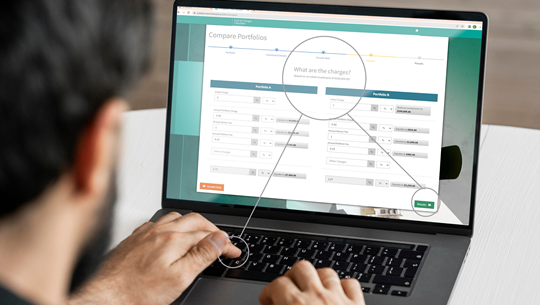Fund managers (and other product manufacturers) currently await the outcome of the consultation conducted by the European Supervisory Authorities (ESAs) on the future destiny of PRIIPs KIDs, and continue to wonder whether a call for yet another extension to the UCITS exemption will come to fruition.
Here we outline the basic differences between PRIIPs KIDs and UCITS KIIDs from the underlying regulation, disclosure requirements and what they set out to achieve.
Underlying regulation
The UCITS Directive came first. The UCITS IV Directive (2009/65/EC) came into force in July 2011 (with a one-year transition period for existing funds), specifically setting out the framework for the Key Investor Information Document (KIID). The standalone, pre-contractual document aimed to replace the simplified prospectus and to offer UCITS investors (both retail and professional) better disclosure in a clear, concise and standardised format, that would also help ease the process of comparing products.
The EU PRIIPs Regulation (EU/1286/2014) on Key Information Documents (KIDs) was introduced in January 2018, and required all manufacturers of Packaged Retail and Insurance-based Investment Products (PRIIPs), such as asset managers, banks and insurance companies, to prepare a pre-contractual document to accompany all products sold to retail investors in the European Economic Area (EEA).
This cross sector regulatory initiative was intended to help investors better understand and compare the key features, risks, rewards and costs of PRIIPs. By definition, all UCITS meet the definition of PRIIPs, and as such the European Commission applied a UCITS exemption to those already publishing their own KIIDs to help manufacturers transition by 31 December 2019. However, following a delay to the introduction of PRIIPs KIIDs, a two-year extension was applied to the transition period until the end of 2021.
What do they set out to achieve?
The intentions of PRIIPs KIDs and UCITS KIIDs are similar in that both require the generic information included to ‘be clear and not misleading’ and must be reviewed at least once a year to help investors base their purchase decisions on accurate disclosures. Standardised formats are also intended to help investors more easily compare products.
PRIIPs KIDs vs UCITS KIIDs
Content
UCITS KIIDs (2 A4 pages) and PRIIPs KIDs (3 A4 pages) are both pre-contractual documents that offer investors information required by law.
UCITS KIIDs are made up of 6 sections, covering:
- Fund/share class and management company details
- Objectives and Investment Policy
- Risk and Reward Profile
- Charges
- Past Performance
- Practical Information
PRIIPs KIDs on the other hand, offer up 8 sections:
- PRIIP manufacturer details
- What is this product?
- What are the risks and what could I get in return?
- What happens if the PRIIP manufacturer is unable to pay out?
- What are the costs?
- How long should I hold it and can take money out early?
- How can I complain?
- Other relevant information
Regulatory obligations
Both KIDs and KIIDs, as we have established, were set up to provide clear and timely information on investment products, namely PRIIPs and UCITS. As such it is no surprise that product manufacturers have to produce and review these documents on an annual basis, as we would expect for other financial reports and statements.
Unlike PRIIPs KIDs, which must be reviewed – and updated if necessary – at least every 12 months following the date of their initial publication or last review date, UCITS managers are required to update and republish all of their KIIDs at the start of each calendar year, to a corresponding regulatory deadline which places operational pressures on product manufacturers, particularly without vendor support and automated systems in place to assist with the design and development, production and dissemination of documents. To find out more about FE fundinfo’s report production solutions, click here.
Furthermore, UCITS KIIDs and PRIIPs KIDs must be translated into the language of each EEA state in which they are marketed and distributed. Filing requirements are more stringent for UCITS, whereby they must file KIIDs with both the home state regulator and host regulator of any EEA state in which it makes a marketing notification.
Performance
Another differentiating factor, and quite possibly the most defining of all, is that PRIIPs KIDs show forward-looking performance scenarios, while UCITS KIIDs show actual historical performance data. PRIIPs KIDs must project performance returns (both value and percentage) based on historical data. Different scenarios based on four different economic conditions (stress, unfavourable, moderate and favourable) must be presented for up to three time periods including the recommended holding period. Unlike UCITS KIIDs, which include up to 10 years of past performance, no past performance is shown on a PRIIPs KID.
For more on the current debate between EU Authorities on the inclusion of past performance in PRIIPs KIDs, click here.
Risk
The way that risk is presented, due to its similarities in name and measuring scale is another cause for confusion (re: SRI vs SRRI).
The Synthetic Risk and Reward Indicator (SRRI) on a UCITS KIID is a measure of volatility of the fund’s prices over the previous five years. It is presented on a scale from 1 to 7, based on prescribed intervals. It should be calculated and monitored weekly, in the case of daily-priced funds, and if the actual SRRI differs from the published SRRI for a period of four months (16 weeks), the KIID must be updated and reissued with the new SRRI.
The Covid-19 pandemic has presented fund groups with the first real test since the introduction of KIIDs eight years ago of having to update many of their KIIDs due to changes in the SRRI. For more information, click here.
The Summary Risk Indicator (SRI) on a PRIIPs KID, meanwhile, is designed to show the relative risk of a PRIIP, using a combination of Market Risk (based on the historical price volatility) and Credit Risk (i.e. the risk of the issuer defaulting), where applicable. The SRI is also shown on a scale from 1 to 7, but because it is possible to lose more than the amount invested on certain PRIIPs, the intervals do not match those of a UCITS KIID SRRI. A PRIIPs KID must be updated and reissued when the published level is no longer the most common when comparing all observations over the last four months.
Impending changes?
At the end of 2019, the Joint Committee of the ESAs published consultation paper JC-2019-63 on amendments to the Regulatory Technical Standards, setting out proposed changes to the contents of PRIIPs KIDs. While the consultation ended earlier this year, and a draft RTS was published (but not submitted to the European Commission for endorsement) in July 2020, the industry still awaits resolution on the future outlook of PRIIPs Regulation and KIDs. So the changes remain in limbo and there has been no official word about the ending of the UCITS KIID exemption.




